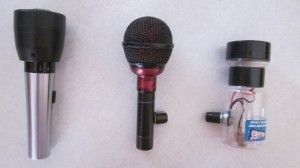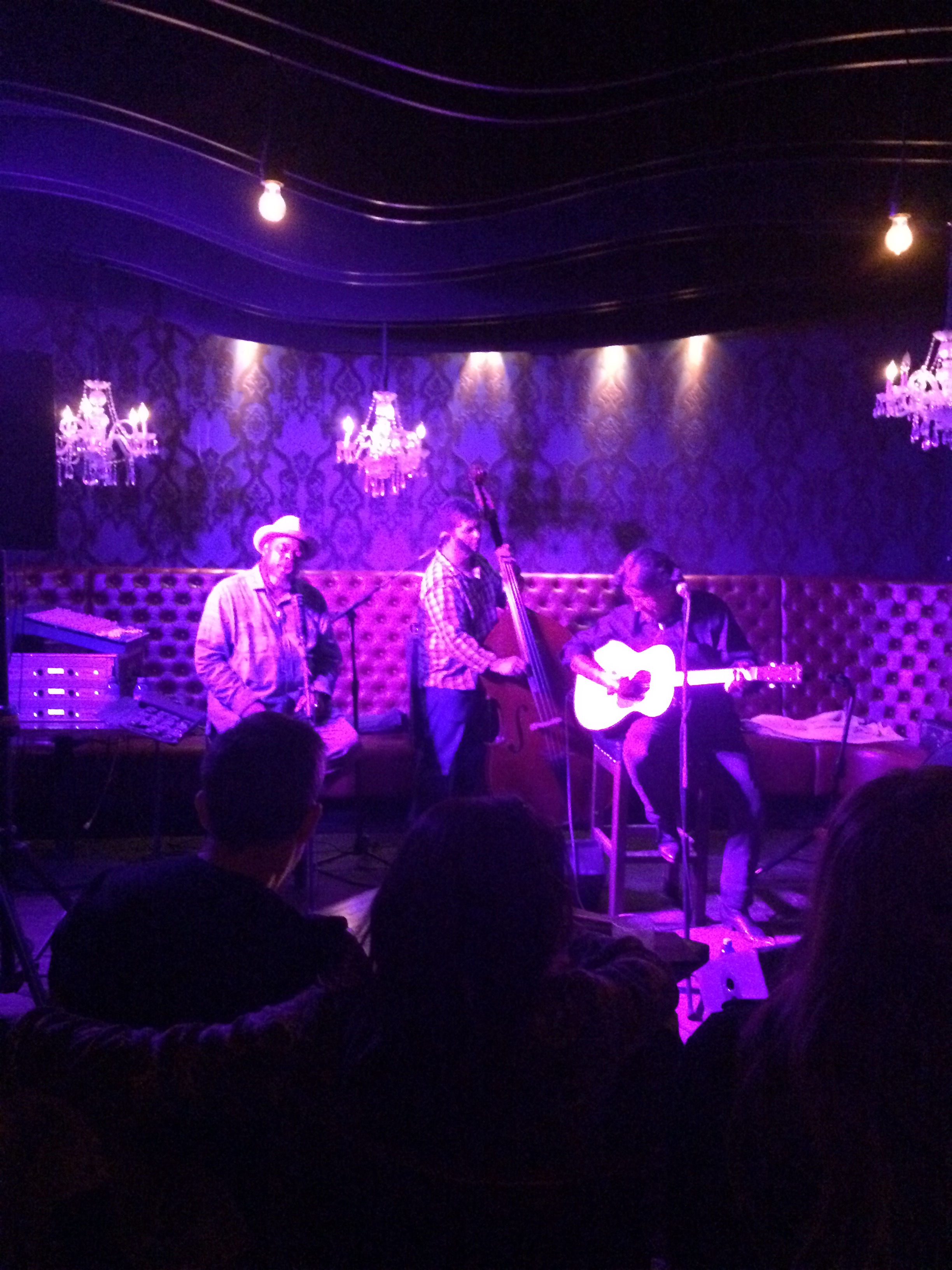
What a Difference a Mic Makes, Part 1 (of 2)
I get a lot of requests to make patches sound tougher and more distorted. (Nobody ever says “make something that sounds angelic.” I do it anyway.) Anyway, I realized recently that I’ve been focused on making the patches in the RP tougher, and I haven’t thought much about the mic.
This is a big deal, because different mics, like different amps (and amp models) have different sounds. Some mics sound hairier than others. The Fireball V, which is my default mic and the one I generally recommend to others, isn’t the best mic to have in your hand if what you want to hear is maximum grind. I happen to like the amount of grind in the Fireball just fine, and the mic certainly does plenty of other things brilliantly. Check out the harmonica sounds on my record “The Lucky One,” on which every harmonica track was recorded with an Audix Fireball V and a Digitech RP500 running my patch set:
But the point remains: people who want maximum grind need a mic that grinds. The follow-on point is that you can use your favorite blues mic with the Digitech RP, and when you do the RP will act much like your favorite blues amp.

Here’s a recording I made today in which I demonstrate three mics–the Audix Fireball V, the Shure 545SD, and the Bottle o’ Blues–playing similar blues licks through my Digitech RP500 running a patch I made based on the Gibson GA-40 amp and cabinet models. All of these mics are very moderately priced; the 545SD is less than $100 at retail, the Fireball V is about $149, and the Bottle o’ Blues is about $66 with shipping. It’s a good thing that these durable mics with tons of character are available at relatively low prices; it’s a very economical way to change your sound, or to add a new range of sounds to your palette, and the learning curve is pretty low. (Um, you plug it in, you cup it in your hands with a harp, and you play through it. Any questions?)
NO changes were made during this recording beyond swapping the mics; I didn’t adjust the recorder position, the patch settings, the output volume of the RP500, or anything else besides the mic in my hand. The differences in the sounds are the result of the mics, and nothing else.
The recording is less than 3 minutes long, but it shows you a lot about the difference a mic can make. The Fireball sounds nice and full, tough enough to do the job. The Shure sounds tougher, and you get a lot of response from the mic whenever you move your hand. The Bottle o’ Blues sounds big and very dirty, with the kind of flat-out rawness that you expect in classic Chicago blues.
Audix Fireball, Shure 545 SD, and Bottle o’ Blues with Digitech RP500 GA40 patch
Keep in mind that this recording is all about amped blues, which is only one of the things you can do with a harmonica. In the same session, I used these mics in a range of musical settings, and I’ll put a few more of those clips out later.
In general, as I’ve said before, this recording confirms my impression that if you’re planning to play nothing but amped blues, you’re best off using a mic that’s traditional for that purpose, like a Bullet or a JT-30 (or in this case, a Bottle o’ Blues). That’s true whether or not you’re playing through an amp, or an amp modeler. (After all, an amp modeler mimics the signal processing behavior of an amp–ideally, the modeler will do whatever the amp would do in a given situation, and produce the same sound.) If you want to play lots of different sounds and styles, you’re better off with a mic with a wider frequency range and a smoother response, which is why I use a Fireball.
Anyway, for people who’ve been wondering whether my patch set works with any mic besides the Fireball V: yes, it does.
If you liked that, you’ll like these:
the 21st century blues harmonica manifesto in sound
Get it on Amazon
Get it on iTunes
the rock harmonica masterpiece
Get it on Amazon
Get it on iTunes
Related Posts
3 Comments
Leave a Reply
You must be logged in to post a comment.
WHAT’S NEW
Categories
- Audio/Video
- Blog
- Blue Future
- Digitech RP Tricks and Tips
- Discography, CDs, Projects, Info, Notes
- Featured Video
- For the Beginner
- Gallery
- Hunter's Effects
- Hunter's Music
- Huntersounds for Fender Mustang
- Meet the Pros
- More Video
- MPH: Maw/Preston/Hunter
- My Three Big Contributions
- Player's Resources
- Pro Tips & Techniques
- Recommended Artists & Recordings
- Recommended Gear
- Recorded Performances
- Reviews, Interviews, Testimonials
- The Lucky One
- Uncategorized
- Upcoming Performances
- Zoom G3 Tips and Tricks



Have you ever considered writing an e-book or guest authoring on other blogs?
I have a blog centered on the same topics you discuss and would really
like to have you share some stories/information. I know my viewers would value your work.
If you are even remotely interested, feel free to shoot me an email.
Noted and thanks, RH
[…] All the RP500 tracks were recorded with an Audix Fireball V mic. All the Mustang tracks were recorde… I think by now everybody who cares to knows that I use a lot of harmonica sounds on my tracks. If you can do it with guitars, I dunno know why it’s not okay to do it with harps. The key to using lots of layers of any instrument is to vary the sounds in those layers, and I find that the smooth sheen that the Fireball imparts to a track contrasts nicely with the rougher tones of the SM58. […]